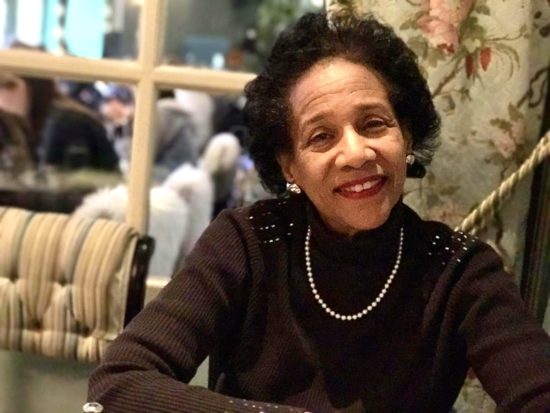
By Andrea Flink
UWS resident Michelle Go was shoved off a subway platform to her death last month by a man previously convicted of violent crimes, repeatedly hospitalized for psychiatric issues, and declared incompetent to stand trial due to mental illness in 2019.
In December, 2021, another man reportedly with a slew of prior arrests and a history of mental illness, allegedly brutally assaulted two women on the Upper West Side, yet was freed again without bail.
What is wrong with our justice system that allows people who are dangerous to themselves or others back on the street where they could inflict further injuries or death? More importantly, how can we fix it?
Efforts have been made. The heartbreaking irony of Michelle Go’s death is that, more than two decades ago, another young woman named Kendra Webdale was shoved to her death off a subway platform by a man with untreated schizophrenia in a tragically similar homicide, leading New York State to enact Kendra’s Law with the goal of avoiding similar incidents.
Kendra’s Law established a system of “Assisted Outpatient Treatment” (AOT), which is court-ordered and mandatory, and intended for people who have had repeated hospitalizations or violent episodes and are unlikely to voluntarily adhere to treatment and live safely in the community without supervision.
Though proven effective, the program is underutilized. In fact, according to the New York Times, court records revealed that doctors attempted a Kendra’s Law intervention on Martial Simon, Michelle Go’s attacker, in 2009, though records that would show whether the order was issued are sealed. Anecdotal reports indicate that Mr. Simon likely would have again been eligible for AOT if only someone had petitioned the court.
Brian Stettin, Policy Director at Treatment Advocacy Center and former Assistant NYS Attorney General, helped draft Kendra’s Law two decades ago and stated in an interview that he believes the city must figure out why all people who are eligible for Kendra’s Law relief aren’t receiving it.
“The goal should be nothing less than to have every single city resident who meets the criteria on a given day under an AOT court order,” Mr. Stettin said. He calls for every person discharged from a psychiatric hospital stay and every person under psychiatric treatment coming out of jail to be reviewed for AOT eligibility, and says those who reach the end of their court-ordered period should be re-evaluated for extension.
Despite the success of AOT in reducing re-arrests and hospitalizations, and the fact that the program has been found to significantly reduce mental health service costs and total state costs, several New York groups, including the NYCLU, oppose Kendra’s Law as violative of civil liberties by forcing people to undergo treatment. According to the NYCLU, “[p]eople with mental and behavior health issues should have control over their treatment decisions — including what medication they take, what therapy sessions they attend, where they live, and what other mental health programs they participate in.”
Mr. Stettin disagrees. “These activists don’t see the irony of their position: Abandoning the severely mentally ill to lead lives of unremitting torment, or freeze to death, or rot in a prison cell, is the ultimate denial of their civil rights.” He also disagrees that a better answer is to make sure people know about treatment opportunities and continue to offer treatment on a voluntary basis: “Some people don’t know they’re ill. So, no matter how much you make this information known, if someone doesn’t know they’re ill, they’re not going to ask for help….A lot of people will wind up in prison or dead before they come to realize their need for treatment.”
New York’s controversial bail rules also play a part in returning dangerous people to the street. Although Darrell Johnson, the alleged assaulter of two women on the UWS, reportedly had 15 prior arrests and a history of mental illness, the judge overseeing his case claimed neither side provided him with enough information to consider ordering bail. Under New York’s 2020 bail reforms, judges can’t automatically hold a defendant pending trial for certain misdemeanors or non-violent felonies, and these attacks were charged as misdemeanors since Johnson did not use a weapon.
Retired Acting New York Supreme Court Justice for the 9th Judicial District Barbara Zambelli, who oversaw criminal trials and mental health court cases for 33 years, noted in an interview, “Even prior to bail reform judges were not technically allowed to consider whether a defendant was likely to commit another violent offense if released. We could only take into account whether a defendant is likely to appear. I’ve always felt judges should be able to consider that. Of course, if you look at a rap sheet, you worry that something else will happen, so of course it’s in the back of your mind and a genuine concern.”
When asked why judges in New York can’t take into account the likelihood of a defendant committing another crime if released, Judge Zambelli replied, “You’ll have to take that up with the New York State legislature.”
Many New York criminal judges reportedly want more discretion in making determinations about bail, and Mayor Adams recently weighed in: “We must allow judges to take dangerousness into account. New York is the only state in the country that does not allow a judge to detain a defendant who poses a threat to the community. 49 other states, as well as the federal government, allow judges to consider a defendant’s dangerousness. New York must catch up.”
On the other side of the argument, in 2020, more than 100 pro-bail reform groups argued that “judges shouldn’t try to predict someone’s ‘dangerousness’ as a rationale to detain them,” the Daily News reported. “Adding ‘dangerousness’ to the bail law would codify racial profiling into pre-trial detention decisions…It is an invitation for bias…People of color would overwhelmingly bear the brunt of this misguided approach. According to a 2016 study, Black people were twice as likely as white people to be misclassified as ‘high risk.’ White people, meanwhile, were misclassified as low risk 63.2 percent more often than Black people.”
While experts may disagree over Kendra’s Law and bail reform, there is one area of growing agreement: unless we increase investment in supportive housing and services for the mentally ill, we won’t reduce violent crime by people with mental illness, no matter what steps we take to improve the criminal justice system. Kent Mackzum, Supervisor of Mental Hygiene Legal Service’s Bellevue Hospital office, summed up this position in an interview:
“What people don’t realize is that public safety can’t be had without investment in community resources. If someone with mental illness serves time and is released, without supportive services they may have another incident. Remember, even if you throw the book at someone, eventually, they still come back to the world. If you send someone upstate for six years, what’s going to happen when he’s released? What support system is out there?”
To expect our criminal justice system to be the primary resource for low-income people with mental illness is a huge and detrimental mistake, said Professor Heather Cucolo, who teaches criminal law and mental disability law at New York Law School, in an interview. “The courts can only do so much. It’s the legislature that needs to act to allocate sufficient funding and create appropriate laws and regulations. Without adequate resources, our jails and prisons become the primary facilitator for criminals with mental health issues.” [The treatment of people with mental illness in prison is] “abysmal, constitutionally inadequate, deficient, blatant disregard for constitutional protections that should be afforded individuals.”
Professor Cucolo continued, “the amount of rehabilitative measures that have to go hand in hand with treatment of mental illness don’t exist. Just by medicating and isolating persons with mental illness, we’re doing way more damage and detriment. That’s doing nothing to help and prepare them for an inevitable release back in society.”
Many believe the most urgent need is for supportive housing, because when people with serious mental illness roam the streets or shelter system, it is difficult to get them the sustained treatment they need and to ensure they adhere to their medications. Elliot Shapiro, former Assistant District Attorney and criminal defense attorney, said, “These people causing trouble are living on the ground. What if they had food and a place to live and counseling? They wouldn’t be on the subway, they’d be in the place where they live, but our culture isn’t willing to put the money in. These people don’t have the political power to demand that kind of resource. If we lock them up for 90 days they will still get out. They are citizens who demand special attention and resources and a lot of people aren’t going to like that, but that’s what it may take.”
NYC also needs additional inpatient psychiatric beds and services. Stettin noted that while the number of these beds in city-run hospitals has remained fairly steady, private hospitals have increasingly eliminated them in favor of more lucrative beds. The New York Times reported that while the number of adults in inpatient psychiatric beds dropped significantly from 2012 to 2019, “the number of people in dire need of help has not declined. From 2013 to 2020, the number of homeless people in New York City with serious mental illness jumped to about 13,200 from 11,500.” Stettin urges Mayor Adams to sit down with operators of private hospitals to figure out what incentives they need to make it worth their while to add more psychiatric beds.
Other measures afoot offer a more humane, effective way to respond to mental health crises and, if successful, could help keep people out of the criminal justice system. Daniel’s Law, introduced in the New York State legislature last session, would create a crisis-intervention model where trained mental health professionals, rather than police officers, respond to mental health emergencies.
Already, B-HEARD, a NYC pilot program, uses 911 to sends teams of EMTs/paramedics and mental health professionals to respond to certain mental health calls. Additionally, Correct Crisis Intervention Today-NYC is a broad coalition that has proposed a peer-led response to mental health crises. It would use a separate 988 hotline to summon CCIT teams to de-escalate purely mental-health crises. Ruth Lowenkron, Director of the Disability Justice Program at New York Lawyers for the Public Interest and a member of CCIT-NYC, noted in an interview that “at present, force is the default response to a mental health crisis.”
Though it is too late to save Michelle Go, Mr. Stettin remains hopeful: “If Mayor Adams will seize this moment to make severity of need the primary driver of how mental health treatment resources are allocated in New York City, Michelle Go will have one more thing in common with Kendra Webdale: She will not have died in vain.”









I remember the Kendra Webdale case from a couple of decades ago. Her attacker had schizophrenia but it was not “untreated”. He came from a middle class background and had family in the city who tried to help him. He had an array of social services and medical treatments available to him. His disease was in check as long as he was medicated. However, he oftentimes refused to take his medicine as he did not like the side effects.
This was why his insanity defense did not work and he was found guilty of murder.
Unfortunately, there are people out there who cannot be helped no matter what anyone tries to do for them. To say these mentally ill people are on the street because of a lack of “resources” is incorrect. There are no easy answers and this is an issue we will be debating for many years to come.
To reply to Otis, there may have been better options for this person with schizophrenia who often stopped his medications. Once monthly injections are available that can help people who have repeated decompensations due to stopping medications as can AOT which involves a team of providers. Even that doesn’t always work but a monthly medication injection and supportive team can make a big difference as does supportive housing.
This is an incredible article. Thanks for your research and presenting all sides of the issue.
The quote from NYCLU is telling. Some people just aren’t capable of doing making their own decisions. Having someone make decisions for them is enhancing their lives, not hurting them.
We shouldn’t apply these policies to anyone who is slightly off – caution is necessary. But if used for clear outliers, it makes a difference for both them and the rest of us. Same for judges – they should use tremendous restraint, but should be enabled to make good decisions.
Wonderful article. Thank you.
Could someone please educate me on something: if someone is found guilty a crime and is found unfit to stand trial due to mental health issues, how does sentencing work? One would think that they would be subject to the same sentencing as someone who was mentally healthy, but than would serve their time in a place where they can receive treatment rather than the general population.
From the tone of this article, I sense that those who are declared incompetent potentially receive more lenient sentencing, which makes no sense. They should not be getting out on the streets sooner.
No. They are committed to a secure facility until such time as they are adjudged to no longer be a danger to the community.
https://www.nysenate.gov/legislation/laws/CPL/330.20
TL/DR: If someone is guilty of a crime that would have gotten them 10 years if mentally healthy, could they claim insanity, go to a mental health facility, get treated, be deemed “no longer a danger to the community” in five years and get out earlier through that loop hole?
That should not be the case but I feel like it is. But I am asking as I do not know.
Commitment is generally indefinite and not pegged to any potential prison sentence for a person who was found guilty and sentenced to time in prison because they actually chose to commit a crime understanding what they were doing. Because they’re not the same thing. You get that, right? We’re not *punishing* the person who’s so severely ill as to successfully meet the standard of criminal insanity? Because we’re not vengeful monsters operating on some kind of toddler morality?
Thank you for this article. I’ve had that same question. In addition to applying Kendra’s law, judge need to consider if the arrested person is a danger to the community. That seems very basic. I’ll be urging our elected leaders locally and at the state level to make that change to the law and to protect everyone (including the severely mentally ill and violent).
Excellent read. We are at a point in society where allowing someone to sleep on the street in sub-zero conditions, and dig through the trash for dinner, is not only tolerated, it’s considered the “compassionate” thing to do. If you dare question it, progressives will give you an earful about the downfalls of capitalism, or remind you that “homelessness is not a crime”.
No one wants a mentally ill homeless person put in jail. Most of us just want them to get help. Somehow forcing them to get help has become a non-starter. Needless to say, the problem won’t get better until this is addressed. Thank you for drawing attention to the problem.
Chances of the city or state doing something to meaningfully improve the problem of crazy homeless people – 0.0001%.
Stettin is right: Being mentally ill and laying in the gutter in your own excrement, or wandering filthy, scantily dressed, aimless in the streets, or laying spreadeagled on a subway platform is not an expression of freedom. Not only are we as citizens at risk but these human beings are more often victims themselves.
I understand that there are multiple reasons for this situation. I understand that this is a nationwide even international problem. It is–more to the point–an abandonment of a commitment to the public weal.
Deinstitutionalization was originally intended to be accompanied by dedicated housing with in situ monitoring by mental health counselors. This never happened. Instead, our state and city found a way to decrease social spending and deliver tax cuts.
This is not an insoluble problem. However, we need strong and moral leadership to address it, which at this point we do not have.
Ask yourself: Where do your taxes go? They should go to ensure a good quality of life and we should demand it of our politicians.
Kendra’s Law was always a good idea & a nice demonstration of what COULD work, but it was never backed-up by the funding for all the Intensive Case Managers & the supervisory & support staff & vehicles the ICMs needed to do their job helping reluctant psychiatric patients without too much paperwork & too large caseloads. The same will happen with Daniel’s Law, as it has with the housing & outpatient treatment facilities & staff since the first psychiatric drugs in the 1950s prompted the chaotic stampede to dump people who can’t & won’t take care of themselves (much less accept treatment for an illness they deny), into a community with inadecuate resources to
help them. The various Civil Liberty Unions & other naive & irresponsible do-gooders who fight to “protect” the mentally ill from treatment are quick to abandon their chosen pet patients as soon as they liberate them from what they portray as predation on the part of mental healthcare professionals; they parade Billy Boggs when they give her a job, but they don’t talk about it when she predictably stops her treatment & gets nasty a few weeks later – they just quietly fire her & let her descend back where she came from with no follow-up. They treat the slow, sloppy suicide of these noncompliant patients as a legal triumph! NO individual has the right to refuse treatment which is needed to prevent them from becoming a menace to themselves & others. And it doesn’t take a judge to predict the behavior of our revolving-door patients; their histories are monotonously documented. And mental illness doesn’t discriminate; it just is. Time to stop shuffling people around between prisons, inpatient wards, & the streets; doubling down on the denial which is symptomatic of psychiatric disease won’t help. Money will.
Pressure must be applied by more than the few who read and write here. Throwing a billion dollars at the problem by the former mayor was beyond wasteful. We must adapt to the new reality and elect new leaders if current leaders are ineffective.
As a medical student I rotated in a psychiatric facility with 2 sections – geriatric and forensic. The forensic side was for those who committed a crime and were found incompetent to stand trial. The ” geriatric” side was for individuals who had serious mental illness and could not make decisions for themselves due to the severity of their disease ( usually with concomitant drug abuse). This experience has always stuck with me throughout my medical career. There are people in on our streets who can not c a re for themselves – period. Regardless of education ( some were master artists, educators) SES, or race. And the quote by the NYCLU shows a great indifference to THEIR life, as well as those who reside in the communities.
Because someone was committed to the geriatric or forensic side, did not mean they would be in this facility forever – their case was reviewed frequently. But I won’t pretend to say that many had ” success” in independent living; Often returning to the same dangerous conditions – leading to serious medical conditions that would require extended hospitalizations or harm to others.
This is a very sad reality. The rhetoric I hear about leaving people to sleep on the subways, streets etc bc it’s “compassion” and they prefer is pure ignorance and actually cruel. Mental illness needs to be treated like any other serious disease in our society- and more so because of the danger it could pose to the community, as in the case of Michele Go.
New York already spends more on Medicaid than any other state, a number that has grown over past several years. Virtually all “mentally ill ” persons are deemed disabled and on or entitled to Medicaid.
In light of above private healthcare systems in NY already have crunched numbers, and decided better us of their beds could be found elsewhere. Not sure what Adams or any mayor can offer them besides yet more money, and even there might not find many takers.
Real problem has been > forty years in making. Neither federal nor state governments have lived up to promises made when wave of deinstitutionalizing mentally ill began.
This article is EVERYTHING!! How do we make people understand that it is NOT compassionate to allow people to sleep on the street, live in filth, beg for food ect.
And yes- how can someone so sick know they are sick and agree to help.
“…How do we make people understand that it is NOT compassionate to allow people to sleep on the street, live in filth, beg for food ect.”
Then what is your answer to the mentally ill issue?
No one can be FORCED to abide by rules/laws/take meds/not take illegal drugs/pay their rent/maintain a home. The mentally ill do have rights.
People have rights and freedoms in this country to choose to live the way they choose. This issue has not been close to being resolved anywhere.
The article is warranted yet most of the comments here are useless empty complaints.
This revolving door of ineffectiveness can be dropped squarely on the shoulders of the lawsuits filed by the ACLU in the 1970’s when patients were released in whole-sale amounts because the ACLU convinced the federal gov’t that there limitations on how long people could be held and what for. Ever since then the treatment of the mentally ill has continued this down hill slide and it won’t get better until we declare this a National emergency with National priorities to fix.
They’re back on the street because soft in the head snowflake judges put them back on the street.
The victims do not matter anymore.
Only the attackers do.
It’s all a bizzaro world.
Right is wrong. Bad is good.
Lock them up, throw away the keys.
People are getting killed.
Life as we knew it, just a few years ago,
is a fading memory.
Holy shit just put up barriers in the train stations like the rest of the world.
Thank you for this article!
CCIT is a great resource as mentioned in the article. Two more for any who would like to pursue action for (1) more compassionate interaction with law enforcement and those with mental illness; (2) more beds/resources /supported housing and living for those with chronic psychiatric illness –
NAMI the National Alliance on Mental Illness does advocacy on all these issues; Community Access is a group that supports mentally ill people in the community.
This is an issue that affects so many people – those with chronic and undertreated illness suffer the most (nearly all of them non-violent, but far too many unhoused), their families, those who work with the homeless, law enforcement who have no good choices when hospitals release people too quickly and jail is not appropriate, ER and medical staff who likewise are not given places to send them. The terrible tragedies like the losses of Ms Webdale and Ms Go are the tips of a huge iceberg of suffering and distress. Profiling people or jailing them has failed the public and the ill for decades. Compassionate and humane ways to divert people away from the criminal justice system but off the streets if there is danger to others are what we all need.
What the NYCLU has managed to achieve is nothing short of complete and utter abandonment of those they proclaim to protect. Shame on them!
This is one of the finest articles I have ever read in the Rag!
Nothing is going to work well until and unless the discriminatory IMD Exclusion is repealed. There were 500,000 beds in “Institutions of Mental Disease” in 1965. There are fewer than 40,000 nationwide today. Want to know more? New York’s Manhattan Institute has the data and a strong argument for repeal without gutting community based mental health centers. https://www.manhattan-institute.org/medicaids-imd-exclusion-case-repeal